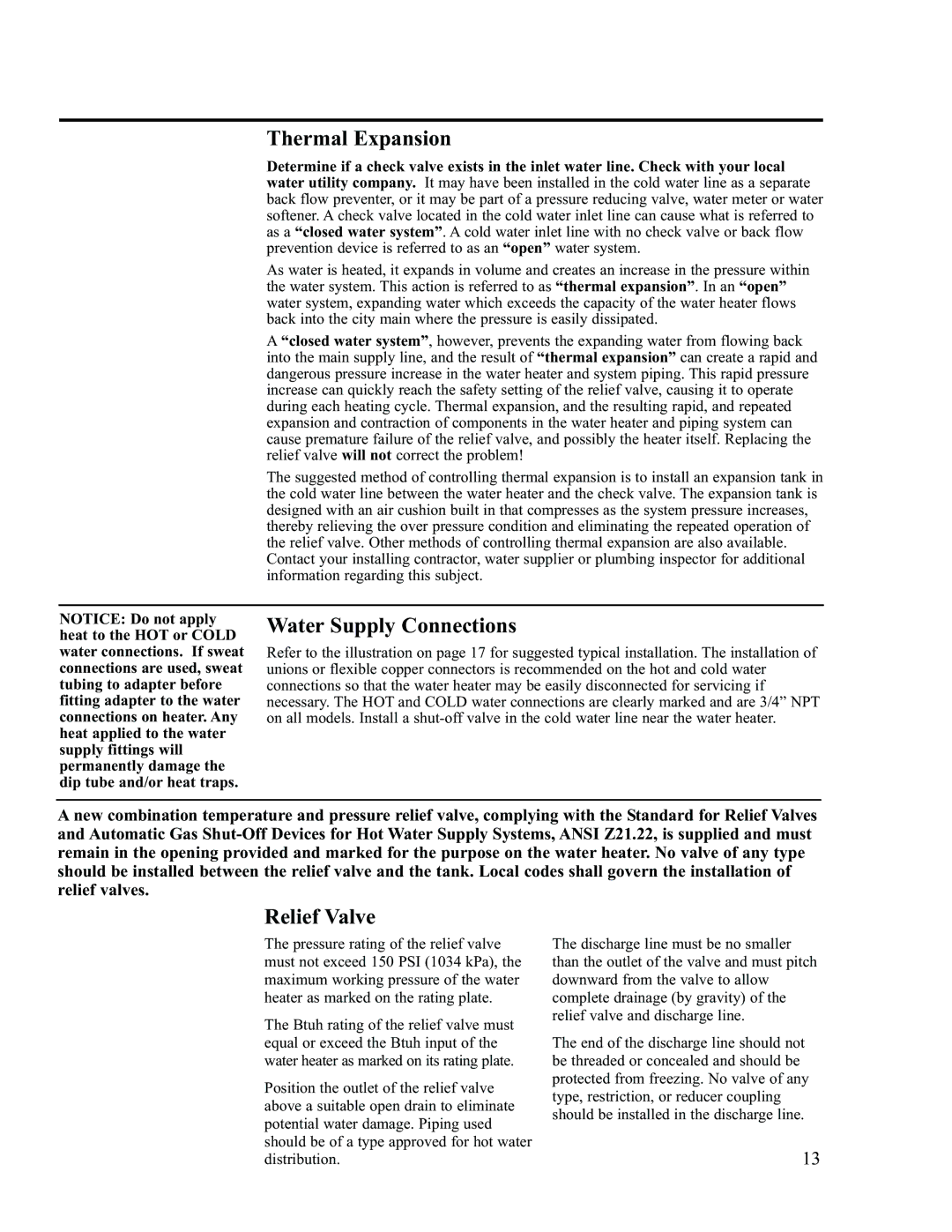AP13370-2 specifications
The Ruud AP13370-2 is a high-performance air conditioning unit designed for both residential and commercial spaces, delivering efficient cooling and heating solutions. This model stands out for its advanced technology and user-friendly features, making it a favored choice among consumers seeking comfort and reliability.One of the main features of the Ruud AP13370-2 is its Energy Efficiency Ratio (EER), which ensures lower energy consumption while providing optimal cooling performance. With its high SEER (Seasonal Energy Efficiency Ratio) rating, the unit is designed to operate with minimal energy usage, thus reducing electricity bills and environmental impact. This efficiency is crucial for eco-conscious homeowners and business operators.
The AP13370-2 integrates innovative inverter technology, allowing for variable speed operation. This technology adjusts the compressor speed to match the desired temperature, providing more precise climate control and reducing noise levels. Consequently, users can enjoy a quieter indoor environment without sacrificing comfort.
In addition to its energy-saving capabilities, the Ruud AP13370-2 is equipped with advanced filtration systems. These filters capture dust, allergens, and other pollutants, enhancing indoor air quality. This is particularly beneficial for individuals with allergies or respiratory issues. The filtration system is designed for easy maintenance, allowing users to replace or clean filters effortlessly.
Moreover, the unit supports smart home integration, enabling remote control through mobile devices or smart speakers. Users can adjust the settings, schedule operations, and monitor energy usage conveniently, fostering a seamless user experience. This feature is especially valuable for those with busy lifestyles, allowing for efficient climate management even when away from home.
Durability is another important characteristic of the Ruud AP13370-2. Constructed with high-quality materials, it is built to withstand varying weather conditions, ensuring longevity and reliability over time. The unit also features a comprehensive warranty, providing users with peace of mind.
Overall, the Ruud AP13370-2 air conditioning unit combines efficiency, technology, and user-friendly features. Its commitment to energy savings, air quality improvement, and smart technology integration makes it an excellent choice for anyone looking to enhance their indoor climate while minimizing their environmental footprint. Whether for home or business use, the AP13370-2 stands as a testament to modern HVAC design and engineering.

